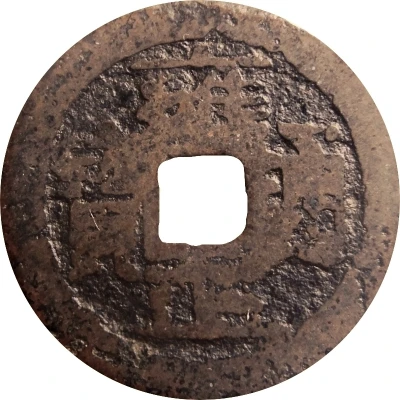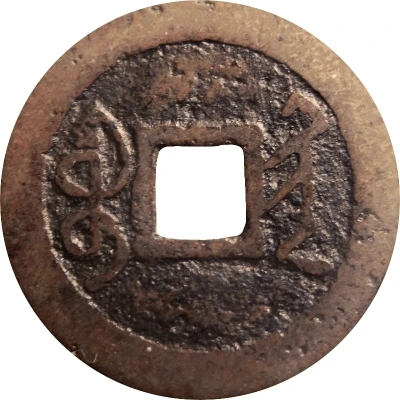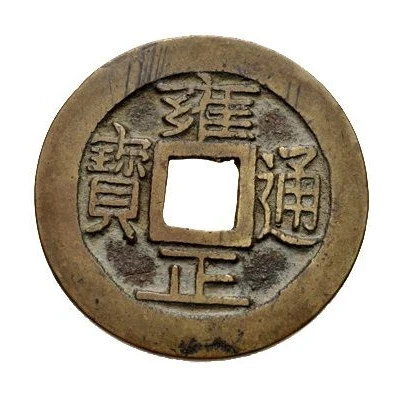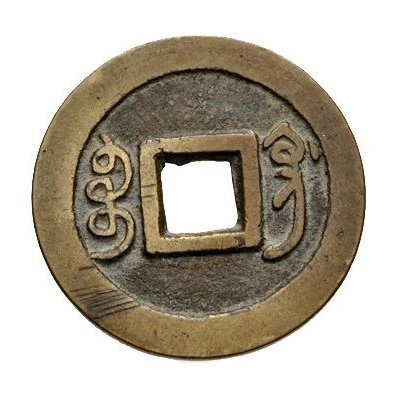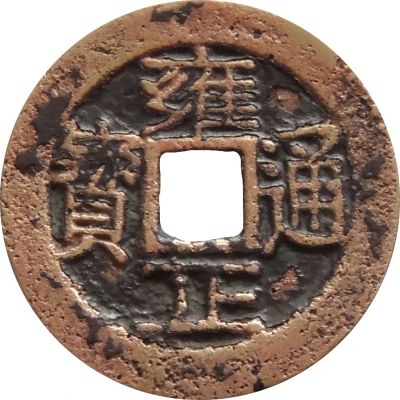
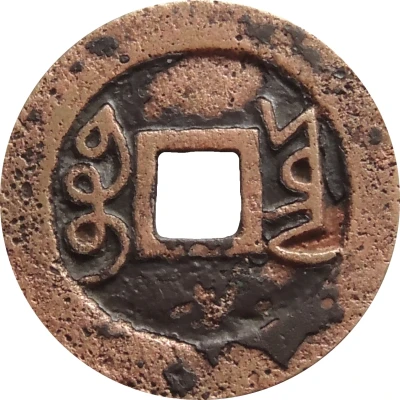

© D.MOREY
1 Cash - Yongzheng Tongbao; Boo-yūn ND
| Brass | 4.15 g | 27 mm |
| Issuer | Empire of China |
|---|---|
| Emperor | Qing dynasty › Yongzheng (雍正帝) (1722-1735) |
| Type | Standard circulation coin |
| Years | 1724-1735 |
| Value | 1 Cash |
| Currency | Cash (621-1912) |
| Composition | Brass |
| Weight | 4.15 g |
| Diameter | 27 mm |
| Thickness | 1.1 mm |
| Shape | Round with a square hole |
| Technique | Cast |
| Orientation | Medal alignment ↑↑ |
| Demonetized | Yes |
| Updated | 2024-10-04 |
| Numista | N#74428 |
|---|---|
| Rarity index | 64% |
Reverse
Two Manchu words (read vertically) separated by the hole.
Script: Mongolian / Manchu
Lettering: ᠪᠣᠣ ᠶᡡᠨ
Translation: Boo-yūn
Edge
Plain
Comment
DocTongDotsDocTongHead
DocBaoFeet
Interesting fact
One interesting fact about the Yongzheng Tongbao coin is that it was the first coin in Chinese history to feature a unique symbol on the reverse side, which was a small square hole in the center of the coin. This hole was known as the "square-holed coin" and was used to distinguish it from other coins in circulation. This feature was introduced by the Yongzheng Emperor himself, who was concerned about the widespread counterfeiting of coins at the time. The square-holed coin became a standard feature of Chinese coins for many years to come and is still recognized today as a symbol of authenticity and value.
